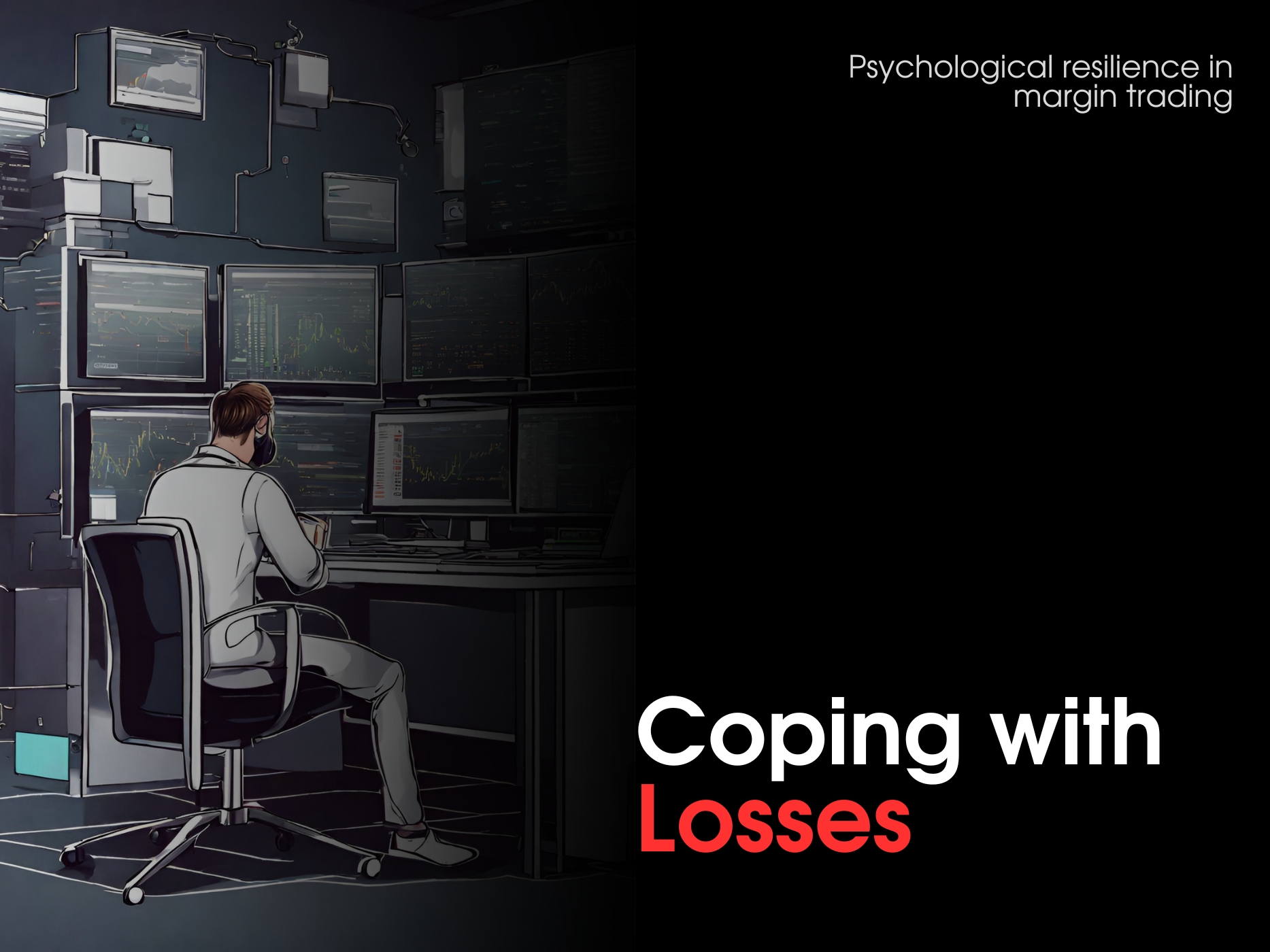The world of cryptocurrency is a thrilling and volatile landscape, where fortunes can be made and lost in the blink of an eye. An illustrative case in point of this statement – margin trading, a technique strongly resonating in the minds of risk-taking personalities. All due to an offering of amplified gains that yet come with the burden of heightened risk. And this very risk lies in proportionally higher losses.
Given this, coping with such losses is an inevitable part of the journey for those who engage in this high-stakes game. In this article, we’ll delve into the psychological resilience needed to keep heads up in margin trading and propose the insights and strategies to help traders grow stronger after facing setbacks.
The Unpredictable Crypto Rollercoaster
There is no secret in this: cryptocurrency markets are notorious for their volatility. Prices can swing wildly in a matter of minutes, and margin trading only intensifies these fluctuations. Or, to be more specific, it amplifies the cruciality of their outcomes.
While potential profits are enticing, the reality may turn into a severe drawback – margin trading exposes investors to higher levels of risk and, consequently, more significant losses. This spurs logical questions: how do traders cope with the emotional and psychological toll of losing substantial sums of money? Do they neglect the risk, or do they make it play by their rules?
Understanding Loss Aversion
To comprehend the psychological challenges of margin trading, we must first explore a concept known as loss aversion.
Loss aversion is a cognitive bias wherein individuals feel the pain of losses more acutely than the pleasure of equivalent gains. Simply put, losing $1,000 can hurt more than the thrill of gaining $1,000
In margin trading, this bias can be significantly damaging. A single bad trade or a sudden market downturn can lead to significant losses and trigger strong emotional reactions. Traders might panic, make impulsive decisions, or abandon their trading strategies altogether. It’s a vicious circle that is tough to break out of. Tough, but not impossible.
Building Psychological Resilience
Psychological resilience in margin trading is not about eliminating losses – it is about learning how to respond to them constructively. Here are some strategies that traders can employ to build emotional stability and navigate through the turbulent world of cryptocurrency trading.
1. Risk Management and Position Sizing
Before entering any trade, establish a clear risk management plan. This includes determining the percentage of the capital you’re willing to risk on a single trade, setting stop-loss orders to limit potential losses, and adhering to these parameters consistently. By doing so, you create a safety net that covers the impact of losses, reducing their effect on the mindset.
2. Embrace a Long-Term Perspective
Margin trading often envisages short-term decision-taking, but adopting a long-term strategy can not only help master the stress of losses. As cryptocurrency markets are volatile, fluctuations are part and parcel of the game. Owing to this, you can make them do the trick to your winning side, and turn them into an object for analysis within your strategy.
On the whole, by focusing on the bigger picture and your long-term trading strategy, you can maintain a calmer mindset in the face of short-term setbacks.
3. Keep Emotions in Check
Emotions can be a trader’s worst enemy. Fear and greed, FOMO, FUD – all these horsemen of crypto emotionality often drive impulsive decisions. To maintain psychological resilience, practise emotional discipline. Stick to your trading strategy, avoid making decisions in the heat of the moment, and consider implementing trading bots to execute your strategy mechanically.
4. Learn from Mistakes
Sometimes, altering the perception does have a meaning. And crypto trading is a perfect case in point of this.
Do not treat losses as your failures. They are actually opportunities to learn and grow. After a losing trade, conduct a thorough analysis. What went wrong? Were there any warning signs you missed? Use each loss as a stepping stone to refine your trading strategy and improve your decision-making process.
5. Diversify Your Portfolio
Diversification is a risk management strategy that can help reduce the impact of losses. Instead of going all-in on a single cryptocurrency or trading pair, consider spreading your investments across different assets. Namely, while purchasing some $BTC, distribute your budget with assets of different characteristics and utility. ($ETH, $WBT, $SOL, etc). This can mitigate the damage caused by a poor-performing asset, as gains in other areas can offset losses.
6. Seek Support and Community
Trading can be a lonely activity, but it doesn’t have to be. Joining trading communities or seeking support from fellow traders can provide emotional support and valuable insights. Try to hit the chats of crypto exchanges. Many high-end companies like WhiteBIT, Kraken etc have elaborated friendly and bustling spaces for communication, in which users are safe to ask for a piece of advice or share their recent outputs. Significantly, WhiteBIT tends to engage the community as well by setting up the contests or special activities for the rewards. Lately it has established the WB Network foundation – a powerhouse of Web3 development grants – and contributed to the community.
Ultimately, sharing experiences, both wins, and losses, can help you realise that you’re not alone in facing these challenges.
7. Know When to Step Away
Margin trading can be all-consuming, and constant monitoring of the market can lead to burnout and stress. It’s essential to recognize when you need a break. Sometimes, the best action you can take after a significant loss is to step away from your trading desk, clear your mind, and regain perspective.
The Road to Resilience
Building psychological resilience in margin trading is an ongoing process. It requires self-awareness, discipline, and a commitment to learning and improving. Every trader will face losses at some point, but how you react to those losses can determine your long-term success in the crypto market.
Remember that even the most experienced traders have faced setbacks and losses. What sets them apart is their ability to bounce back, adapt, and continue pursuing their trading goals. They view losses not as defeats but as opportunities for growth and refinement of their skills and strategies.
In a nutshell, margin trading can be tough as far as it can be thrilling. Coping with losses is an integral part of this path, and psychological resilience is the key to enduring and thriving. By understanding the principles of loss aversion, implementing risk management strategies, maintaining a long-term perspective, and seeking support when needed, traders can navigate the unpredictable crypto rollercoaster with confidence. Remember, losses are not the end; they are a stepping stone on the road to trading success.



